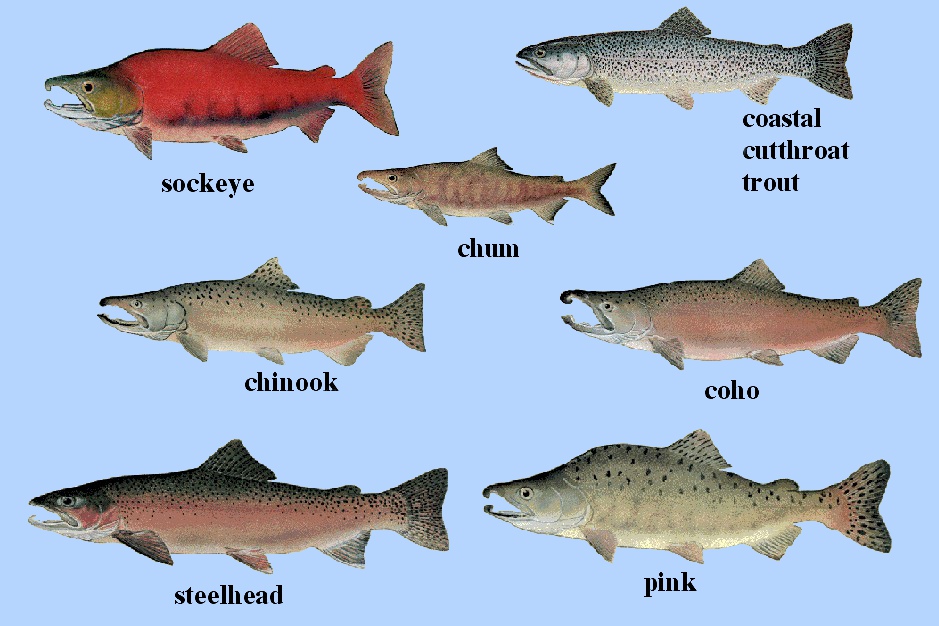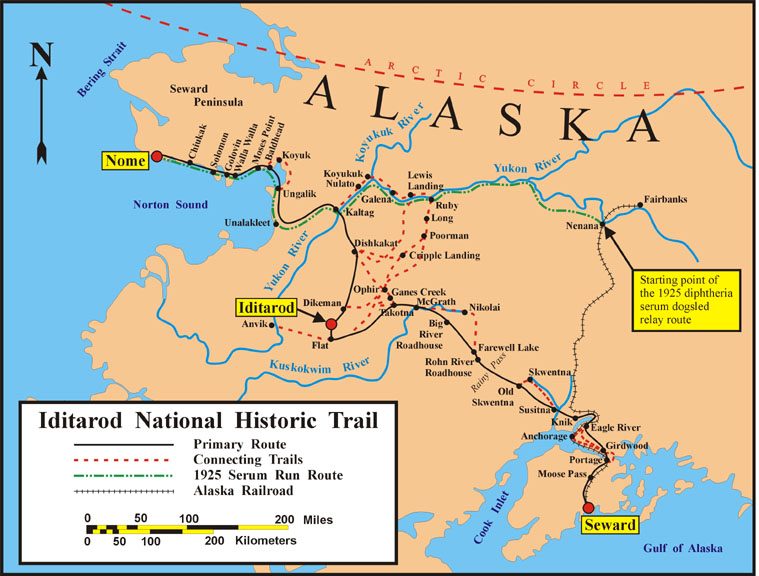|
Deg Xitʼan
Deg Hitʼan (also Deg Xitʼan, Deg Hitan, Degexitʼan, Kaiyuhkhotana, russian: Дег-хитан) is a group of Athabaskan peoples in Alaska. Their native language is called Deg Xinag. They reside in Alaska along the Anvik River in Anvik, along the Innoko River in Shageluk, and at Holy Cross along the lower Yukon River. The Deg Hitʼan are members of the federally recognized Alaska Native tribes of Anvik Village, Shageluk Native Village, and Holy Cross Village. The Iditarod Trail's antecedents were the native trails of the Dena'ina and Deg Hitʼan Athabaskan Indians and the Inupiaq Eskimos. Their neighbors are other Athabaskan-speaking and Yupik Eskimo peoples: Yup'ik (west and south), Holikachuk (north), Upper Kuskokwim (north and east), and Dena'ina (south). Name The autonyms used by this group of Athabaskan people are: Deg Xitʼan (local people) and Deg Xinag (local language).Beth R. Leonard 2007Deg Xinag oral traditions: reconnecting indigenous language and. edu ... [...More Info...] [...Related Items...] OR: [Wikipedia] [Google] [Baidu] |
Field Museum Of Natural History
The Field Museum of Natural History (FMNH), also known as The Field Museum, is a natural history museum in Chicago, Illinois, and is one of the largest such museums in the world. The museum is popular for the size and quality of its educational and scientific programs, and its extensive scientific-specimen and artifact collections. The permanent exhibitions, which attract up to two million visitors annually, include fossils, current cultures from around the world, and interactive programming demonstrating today's urgent conservation needs. The museum is named in honor of its first major benefactor, Marshall Field, the department-store magnate. The museum and its collections originated from the 1893 World's Columbian Exposition and the artifacts displayed at the fair. The museum maintains a temporary exhibition program of traveling shows as well as in-house produced topical exhibitions. The professional staff maintains collections of over 24 million specimens and objects tha ... [...More Info...] [...Related Items...] OR: [Wikipedia] [Google] [Baidu] |
Holy Cross, Alaska
Holy Cross ( in Deg Xinag, esu, Ingirraller, russian: Холи-Кросс) is a city in Yukon-Koyukuk Census Area, Alaska, United States. At the 2010 census the population was 178, down from 227 in 2000. Geography Holy Cross is located at (62.198048, -159.773418). According to the United States Census Bureau, the city has a total area of , of which, of it is land and of it (16.51%) is water. Demographics Holy Cross first appeared on the 1880 U.S. Census as the unincorporated Inuit village of "Askhomute." In 1890, it was reported as "Kozerevsky." In 1900 and 1910, it was called "Koserefsky." It did not report on the 1920 U.S. Census. In 1930, it was then returned as Holy Cross for the first time. It was formally incorporated in 1968. As of the census of 2000, there were 227 people, 64 households, and 49 families residing in the city. The population density was 7.3 people per square mile (2.8/km2). There were 81 housing units at an average density of 2.6 per square m ... [...More Info...] [...Related Items...] OR: [Wikipedia] [Google] [Baidu] |
Louse
Louse ( : lice) is the common name for any member of the clade Phthiraptera, which contains nearly 5,000 species of wingless parasitic insects. Phthiraptera has variously been recognized as an order, infraorder, or a parvorder, as a result of developments in phylogenetic research. Lice are obligate parasites, living externally on warm-blooded hosts which include every species of bird and mammal, except for monotremes, pangolins, and bats. Lice are vectors of diseases such as typhus. Chewing lice live among the hairs or feathers of their host and feed on skin and debris, while sucking lice pierce the host's skin and feed on blood and other secretions. They usually spend their whole life on a single host, cementing their eggs, called nits, to hairs or feathers. The eggs hatch into nymphs, which moult three times before becoming fully grown, a process that takes about four weeks. Genetic evidence indicates that lice are a highly modified lineage of Psocoptera (now called Ps ... [...More Info...] [...Related Items...] OR: [Wikipedia] [Google] [Baidu] |
Indigenous Peoples Of The Americas
The Indigenous peoples of the Americas are the inhabitants of the Americas before the arrival of the European settlers in the 15th century, and the ethnic groups who now identify themselves with those peoples. Many Indigenous peoples of the Americas were traditionally hunter-gatherers and many, especially in the Amazon basin, still are, but many groups practiced aquaculture and agriculture. While some societies depended heavily on agriculture, others practiced a mix of farming, hunting, and gathering. In some regions, the Indigenous peoples created monumental architecture, large-scale organized cities, city-states, chiefdoms, states, kingdoms, republics, confederacies, and empires. Some had varying degrees of knowledge of engineering, architecture, mathematics, astronomy, writing, physics, medicine, planting and irrigation, geology, mining, metallurgy, sculpture, and gold smithing. Many parts of the Americas are still populated by Indigenous peoples; some countries have ... [...More Info...] [...Related Items...] OR: [Wikipedia] [Google] [Baidu] |
Central Alaskan Yup'ik Language
Central is an adjective usually referring to being in the center of some place or (mathematical) object. Central may also refer to: Directions and generalised locations * Central Africa, a region in the centre of Africa continent, also known as Middle Africa * Central America, a region in the centre of America continent * Central Asia, a region in the centre of Eurasian continent * Central Australia, a region of the Australian continent * Central Belt, an area in the centre of Scotland * Central Europe, a region of the European continent * Central London, the centre of London * Central Region (other) * Central United States, a region of the United States of America Specific locations Countries * Central African Republic, a country in Africa States and provinces * Blue Nile (state) or Central, a state in Sudan * Central Department, Paraguay * Central Province (Kenya) * Central Province (Papua New Guinea) * Central Province (Solomon Islands) * Central Province, Sri Lan ... [...More Info...] [...Related Items...] OR: [Wikipedia] [Google] [Baidu] |
Exonym And Endonym
An endonym (from Greek: , 'inner' + , 'name'; also known as autonym) is a common, ''native'' name for a geographical place, group of people, individual person, language or dialect, meaning that it is used inside that particular place, group, or linguistic community in question; it is their self-designated name for themselves, their homeland, or their language. An exonym (from Greek: , 'outer' + , 'name'; also known as xenonym) is an established, ''non-native'' name for a geographical place, group of people, individual person, language or dialect, meaning that it is used only outside that particular place, group, or linguistic community. Exonyms exist not only for historico-geographical reasons but also in consideration of difficulties when pronouncing foreign words. For instance, is the endonym for the country that is also known by the exonym ''Germany'' in English, in Spanish and in French. Naming and etymology The terms ''autonym'', ''endonym'', ''exonym'' and '' ... [...More Info...] [...Related Items...] OR: [Wikipedia] [Google] [Baidu] |
Upper Kuskokwim People
The Upper Kuskokwim people or Upper Kuskokwim Athabaskans, Upper Kuskokwim Athabascans (Upper Kuskokwim language, own native name ), and historically Kolchan, Goltsan, Tundra Kolosh, and McGrath Ingalik are an Alaskan Athabaskans, Alaskan Athabaskan people of the Athabaskan languages, Athabaskan-speaking ethnolinguistic group. First delineation of this ethnolinguistic group was described by anthropologist Edward Howard Hosley (who has specialized in the study of Alaskan Athabaskan cultures) in 1968, as Kolchan. According to Hosley, "Nevertheless, as a group possessing a history and a culture differing from those of its neighbours, the Kolchan deserve to be recognized as an independent group of Alaskan Athapaskans."Edward Hosley 1968The Kolchan: delineation of a new Northern Athapaskan Indian group/ref> They are the original inhabitants of the Upper Kuskokwim River villages of Nikolai, Alaska, Nikolai, Telida, Alaska, Telida, and McGrath, Alaska, McGrath, Alaska. About 25 of a total o ... [...More Info...] [...Related Items...] OR: [Wikipedia] [Google] [Baidu] |
Holikachuk People
Holikachuk (also Innoko, Organized Village of Grayling, Innoka-khotana, Tlëgon-khotana) are a Central Alaskan Yup'ik people, Yupikized Alaska Native Alaskan Athabaskans, Athabaskan people of the Athabaskan languages, Athabaskan-speaking ethnolinguistic group to western Alaska. Their native territory includes the area surrounding the middle and upper Innoko River. Later in 1963 they moved to Grayling, Alaska, Grayling on the Yukon River. The Holikachuk call themselves ''Doogh Hit’an'' (). The name ''Holikachuk'' is derived from the name (in the Holikachuk language) of a village in native Holikachuk, Alaska, Holikachuk territory. The Holikachuk have been neglected by anthropologists, resulting in little documentation (both published and unpublished). In the past they have erroneously (or out of convenience) been grouped with the Koyukon people, Koyukon. The peoples neighboring the Holikachuk are in the north the Yupik peoples, Yup'ik and Koyukon people, Koyukon, in the east t ... [...More Info...] [...Related Items...] OR: [Wikipedia] [Google] [Baidu] |
Iditarod Trail
The Iditarod Trail, also known historically as the Seward-to-Nome Trail, is a thousand-plus mile (1,600 km) historic and contemporary trail system in the US state of Alaska. The trail began as a composite of trails established by Alaskan native peoples. Its route crossed several mountain ranges and valleys and passed through numerous historical settlements en route from Seward to Nome. The discovery of gold around Nome brought thousands of people over this route beginning in 1908. Roadhouses for people and dog barns sprang up every 20 or so miles. By 1918 World War I and the lack of 'gold fever' resulted in far less travel. The trail might have been forgotten except for the 1925 diphtheria outbreak in Nome. In one of the final great feats of dog sleds, twenty drivers and teams carried the life-saving serum in 127 hours. Today, the Iditarod Trail Sled Dog Race serves to commemorate the part the trail and its dog sleds played in the development of Alaska, and the route an ... [...More Info...] [...Related Items...] OR: [Wikipedia] [Google] [Baidu] |
Alaska Native
Alaska Natives (also known as Alaskan Natives, Native Alaskans, Indigenous Alaskans, Aboriginal Alaskans or First Alaskans) are the indigenous peoples of Alaska and include Iñupiat, Yupik, Aleut, Eyak, Tlingit, Haida, Tsimshian, and a number of Northern Athabaskan cultures. They are often defined by their language groups. Many Alaska Natives are enrolled in federally recognized Alaska Native tribal entities, who in turn belong to 13 Alaska Native Regional Corporations, who administer land and financial claims. Ancestors of Native Alaskans or Alaska Natives migrated into the area thousands of years ago, in at least two different waves. Some are descendants of the third wave of migration, in which people settled across the northern part of North America. They never migrated to southern areas. For this reason, genetic studies show they are not closely related to native peoples in South America. Alaska Natives came from Asia. Anthropologists have stated that their journey from ... [...More Info...] [...Related Items...] OR: [Wikipedia] [Google] [Baidu] |


_2007.jpg)



.png)